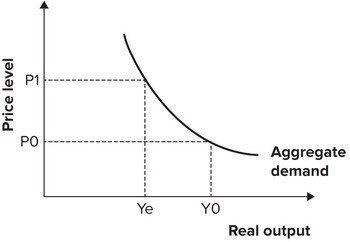When the domestic money prices of goods are held constant
A) a nominal dollar appreciation makes U.S. goods cheaper compared with foreign goods.
B) a nominal dollar depreciation makes U.S. goods less appealing in foreign markets.
C) a nominal dollar appreciation does not affect the prices of U.S. goods.
D) a nominal dollar depreciation makes U.S. goods more expensive compared with foreign goods.
E) a nominal dollar depreciation makes U.S. goods cheaper compared with foreign goods and a nominal dollar appreciation makes U.S. goods more expensive compared with foreign goods.
E
You might also like to view...
If the Fed wants to fight recession, it will ________ the federal funds rate in order to ________
A) lower; increase aggregate demand B) raise; increase aggregate supply C) lower; increase aggregate supply D) raise; decrease aggregate supply E) raise; increase aggregate demand
Which of the following statements about the optimal solution to the consumer problem based on the Cobb-Douglas utility function is NOT true?
A) The cross-price elasticities of demand are zero. B) Both goods have downward sloping demand curves. C) Both goods are normal goods. D) The marginal utility of income may be negative.
Refer to the graph shown. Given the increase in the price level in the graph, it is likely that the multiplier effect:
A. reduces the quantity of aggregate demand by Y0 ? Ye. B. raises the quantity of aggregate demand by less than Y0 ? Ye. C. raises the quantity of aggregate demand by Y0 ? Ye. D. reduces the quantity of aggregate demand by less than Y0 ? Ye.
Calculate the user cost of capital of a machine that costs $5000 and depreciates at a rate of 25%, when the nominal interest rate is 10% and the expected inflation rate is 5%.
A. $5000 B. $1500 C. $150 D. $500